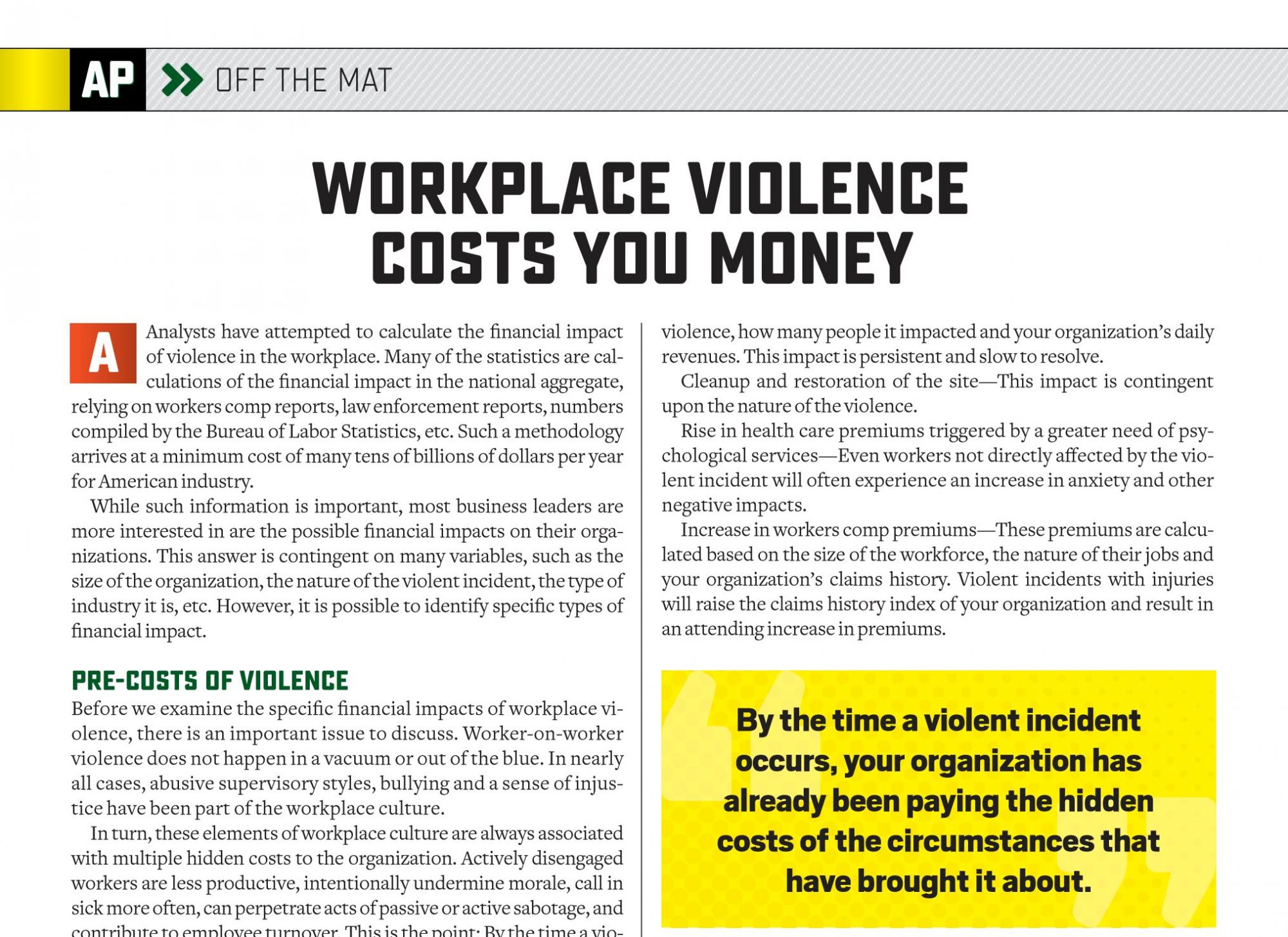Workplace Violence Costs You Money
BY Gary Sheely

Analysts have attempted to calculate the financial impact of violence in the workplace. Many of the statistics are calculations of the financial impact in the national aggregate, relying on workers comp reports, law enforcement reports, numbers compiled by the Bureau of Labor Statistics, etc. Such a methodology arrives at a minimum cost of many tens of billions of dollars per year for American industry.
While such information is important, most business leaders are more interested in are the possible financial impacts on their organizations. This answer is contingent on many variables, such as the size of the organization, the nature of the violent incident, the type of industry it is, etc. However, it is possible to identify specific types of financial impact.
Pre-Costs of Violence
Before we examine the specific financial impacts of workplace violence, there is an important issue to discuss. Worker-on-worker violence does not happen in a vacuum or out of the blue. In nearly all cases, abusive supervisory styles, bullying and a sense of injustice have been part of the workplace culture.
In turn, these elements of workplace culture are always associated with multiple hidden costs to the organization. Actively disengaged workers are less productive, intentionally undermine morale, call in sick more often, can perpetrate acts of passive or active sabotage, and contribute to employee turnover. This is the point: By the time a violent incident occurs, your organization has already been paying the hidden costs of the circumstances that have brought it about, often for years.
What to Do After a Violence Incident
Differences in the size of the organization and the nature of the violence make it difficult to establish a useful range of financial impact for every case. However, the categories of impacts listed below will be true across the board. Given the many variables, it’s not practical to suggest figures, but the reader can easily apply the following impacts to their organization.
Critical incident debriefing for affected workers—Survivors of violent events at work, even those with no physical injuries, often struggle to regain a sense of normalcy. Facilitating such an experience for impacted employees is not only a moral and ethical obligation; it’s in the best interest of all concerned. In most cases it will require outside facilitators.
Temporary closure of the facility because of the incident—You can arrive at a ballpark figure for your organization by multiplying your estimated daily revenues by the number of days your facility will be closed. This could be anywhere from one to three or four days.
Revenue lost to decline in productivity—Again, the magnitude of this impact is dictated by several things, including the nature of the violence, how many people it impacted and your organization’s daily revenues. This impact is persistent and slow to resolve.
Cleanup and restoration of the site—This impact is contingent upon the nature of the violence.
Rise in health care premiums triggered by a greater need of psychological services—Even workers not directly affected by the violent incident will often experience an increase in anxiety and other negative impacts.
Increase in workers comp premiums—These premiums are calculated based on the size of the workforce, the nature of their jobs and your organization’s claims history. Violent incidents with injuries will raise the claims history index of your organization and result in an attending increase in premiums.
Litigation costs—These costs have risen substantially in the last decade. Jury awards of several million dollars are not uncommon.
Replacement costs for up to 10 percent turnover in the workforce—Studies have shown that employee turnover spikes after violent incidents. Human resources professionals tell us that the cost of turnover can be between two-thirds to twice the annual salary of the person being replaced. You can apply the math to your organization.
There are other wildcard impacts not listed above, such as a possible impact on shareholder value, a public relations effort to counter negative publicity, etc. When you consider all the ways a violent incident at your workplace can impact your organization’s bottom line, prevention programs just make good sense.

Gary Sheely
Gary Sheely is an associate of the Safety Institute and Tactical Confrontation Specialist focusing on workplace violence issues. For more information, visit www.safetyinstitute.com.
